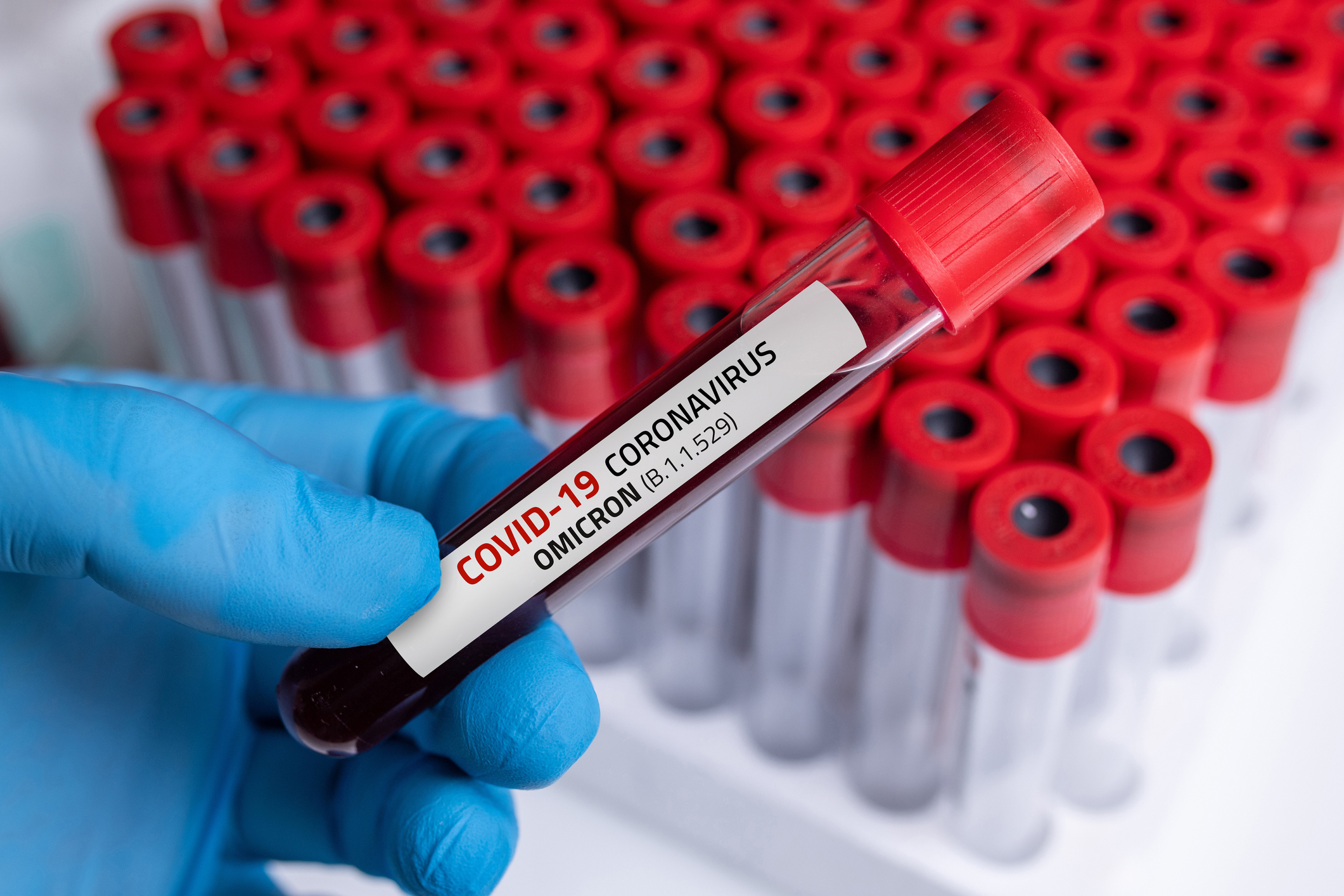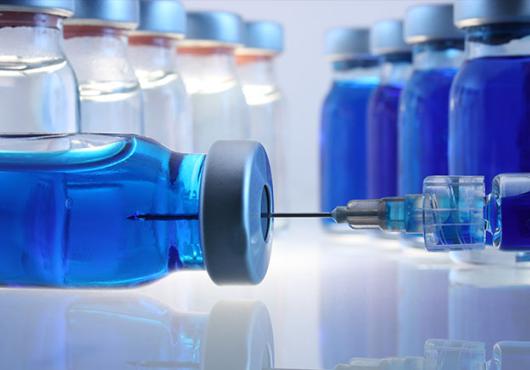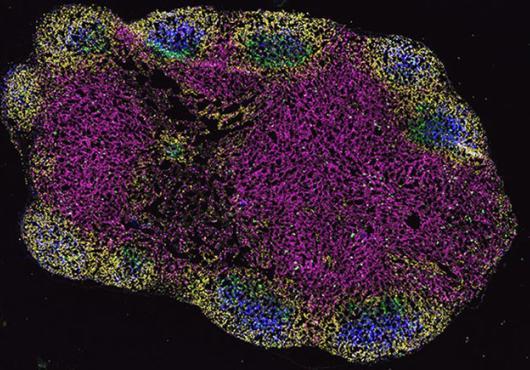
This article is part of Harvard Medical School’s continuing coverage of COVID-19.
Since March 2020, the Harvard Medical School-led Massachusetts Consortium on Pathogen Readiness, or MassCPR, has been addressing the immediate and long-term implications of the COVID-19 pandemic.
Harvard Medicine News recently asked these MassCPR experts about the ever-evolving situation.
- Andrea Ciaranello, HMS associate professor of medicine and director of the perinatal infectious disease program at Massachusetts General Hospital and MassCPR member
- Richelle Charles, HMS associate professor of medicine at Mass General and co-director of the MassCPR biospecimens program
- Jacob Lemieux, HMS instructor in medicine at Mass General and co-lead of the MassCPR viral variants program
- Jonathan Li, HMS associate professor of medicine at Brigham and Women’s Hospital and MassCPR member
- Jeremy Luban, professor of molecular medicine, biochemistry & molecular pharmacology at UMass Chan Medical School and co-lead of the MassCPR viral variants program
- Bruce Walker, director of the Ragon Institute of MGH, MIT and Harvard and faculty co-lead of MassCPR
- David Walt, HMS professor of pathology at Brigham and Women’s and co-lead of the MassCPR diagnostics program
Harvard Medicine News: What does the pandemic look like today from the perspective of a doctor on the frontlines at a major hospital?
Charles: Like other hospitals across the U.S., we’re seeing a rise in hospitalized patients with COVID at Mass General. What’s notably different from past waves is that almost half of these patients are in the hospital for non COVID-related illnesses, such as heart attacks. In other words, half of the cases are incidental, with no or very mild symptoms.
There’s also a lower percentage of patients on ventilators secondary to COVID compared to past surges. There’s a lower number of deaths, likely due to a combination of factors. For one, we’re in a more vaccinated environment here in Massachusetts. For another, emerging data suggest omicron causes less severe disease.
One thing that’s different is we’re testing patients not only when they’re admitted to the hospital but also on the third day after admission, which we didn’t do in prior waves. So we’re catching people who on admission may be in that window between exposure and having a positive test.
HM News: Is the omicron peak over?
Lemieux: In Massachusetts, cases have peaked. They’re consistently downtrending. Hospitalizations are probably close to peaking and they tend to lag cases by two to three weeks or so. Deaths have probably not peaked yet, but hopefully they will not peak at the levels they have before, and deaths do not tend to lag more than a few weeks behind hospitalizations.
The other side of this is when will the atmosphere of “pandemic-ness” peak? When will the sense of our lives being dominated by omicron peak? Those are both social and policy questions. They involve trade-offs: what level of risk we are willing to accept to reengage in critical aspects of society. Those are discussion points for society. My colleagues are asking how we inform that discussion with risk calculus based on what we know scientifically and where we are from a medical standpoint.
HM News: Do COVID-19 vaccines lower the chances that people will transmit the omicron variant?
Lemieux: We’re still collecting evidence about the effect of vaccines on omicron transmission, but all the data we’ve gathered about approved COVID-19 vaccines so far suggest they have outstanding efficacy against death, hospitalization, and severe disease and substantial efficacy against transmission. It’s important to remember that these vaccines have been designed to keep people from dying and getting severely ill with COVID-19.
Li: There’s now been enough data from other parts of the world, including the U.K., to really show that vaccines protect against symptomatic omicron infection, especially with boosters. I would encourage everyone to get vaccinated.
HM News: There’s conflicting guidance on how long after infection with SARS-CoV-2 people should get a vaccine dose or a booster if they haven’t had one already. How can people decide what to do?
Charles: The current CDC guidance is that you should get vaccinated after you’ve isolated and recovered from your symptoms. This decreases your likelihood of getting COVID again.
Li: The problem with natural infection is that individuals have a wide range of antibody levels afterward. People are protected against reinfection for a certain period of time, but that time varies from person to person, and we can’t tell how long any particular person will be protected. Vaccines, on the other hand, are standardized. They raise people’s antibody levels for what is likely a longer duration than natural infection. They provide a more reliable means of protecting people over time.
HM News: Less than three months into the omicron wave, what do we know about this variant and pregnancy?
Ciaranello: When we think about how respiratory diseases affect pregnancy, we ask three types of questions. For each, we have a large amount of information from variants that came before omicron and very little about omicron.
With previous variants, especially delta, it was clear that pregnant people were more likely to have severe illness than people who aren’t pregnant. Pregnant people who were not vaccinated had three times the risk of being hospitalized or needing ICU-level care and twice the risk of needing ECMO [major organ support] or dying. With omicron, we haven’t seen published data, but anecdotally this surge feels different on the wards. We see many more cases throughout the community but fewer pregnant women going to the ICU and needing urgent ventilation or urgent delivery. We may be benefiting from high vaccination rates here in the northeast. It’s important to remember that while omicron may be milder than delta, we don’t know if it’s milder than previous variants, especially for people who are not yet vaccinated.
Second, any severe illness in the mom is bad for the baby and can lead to things like preterm delivery and neonatal death. That has also been seen in COVID, with many higher risks of pregnancy complications such as fetal growth restriction and preterm delivery. With delta we also saw increased risk of stillbirth for the first time. We haven’t seen data yet for omicron.
Third, we always ask how we can prevent infection or prevent severe maternal illness and fetal complications. Our recommendations during and after pregnancy remain to get vaccinated and get boosted. We have strong, compelling data about safety and benefit for mom and baby. It is also prudent to take personal protective precautions such as masking and avoiding large, unmasked indoor gatherings.
COVID vaccines don’t perfectly prevent all infections, but they do prevent many, and when infection occurs, they prevent those bad outcomes. We haven’t seen whether vaccination prevents mother-to-child COVID transmission, which is rare, but we do know that transfer of maternal antibodies in utero or through breastfeeding after vaccination provides some protection when infants are too young to be vaccinated.
In terms of medicines, I think remdesivir is a good option for those who are pregnant. It does require intravenous delivery, so it can be hard to arrange, but we have good data. Some others, like Paxlovid and sotrovimab, we don’t have good data about in pregnancy, but we do have information on similar medicines. We’re trying to avoid molnupiravir because we don’t have safety data [for pregnancy] and the mechanism of action suggests there’s some reason to avoid it.
A lesson the medical community hasn’t sufficiently learned is including pregnant and breastfeeding people in clinical trials. We’ll often exclude them out of a well-intentioned desire to protect them, but we’re seeing how important it is to include them unless there’s a really compelling reason not to.
HM News: What do you wish more people knew about at-home COVID testing?
Walt: Understanding what is technically known as your pretest probability could reduce some of the confusion about how and when to use rapid tests and use them more effectively.
Most of these rapid tests are antigen tests intended to test individuals who have what’s referred to as high pretest probability—having a reasonably high likelihood of being infected. These are people with symptoms, like a sore throat or cough, or those who are asymptomatic but have been exposed to COVID, had close contact with someone who subsequently tested positive, or went somewhere high-risk, like a large event or a long international flight.
These at-home tests work best when viral loads are high. They catch true infections somewhere between 36 percent and 82 percent of the time, which is lower than the gold standard, PCR. These numbers sound like rapid tests miss a lot of the cases, and they do, but that’s for a single test. If you have high pretest probability and you get a negative result, we recommend retesting two days later because there’s a good chance by that time that the virus has replicated with a load high enough for the test to detect it. If you have high pretest probability and you get a positive result, you almost certainly have COVID. You don’t need to go out and get a PCR test; just quarantine.
Now, if you don’t have high risk factors and are just, say, gathering with others, we say you have low pretest probability. These at-home tests have excellent specificity; they give you true negative results 98 percent to 100 percent of the time. If you get a negative result and have no symptoms, you’re almost certainly negative and can attend a gathering. But understand, there are some false positives. So if you get a positive and are low probability, we again recommend retesting. You can do it right away, and if it’s negative, then yes, go ahead.
HM News: What’s next for COVID tests?
Walt: One hope is that as we learn more about the variations in proteins across SARS-CoV-2 variants, manufacturers can design tests that work on all those variants. Second, we’re beginning to see molecular tests, those that measure the viral RNA, transition into the home, which can give you the same kind of sensitivity to low concentrations of virus that the PCR tests can give. Third, we’re seeing manufacturers introduce tests not just for SARS-CoV-2 but for influenza virus and respiratory syncytial virus or RSV. So there could be respiratory tests in the future that you can use at home to determine what you have when you get a cold or cough.
HM News: What’s your biggest concern right now?
Ciaranello: My number one concern is the remaining need to vaccinate the globe. It’s important to remember that only about 50 percent of people have had their first vaccination series. In many countries, it’s less than 10 percent. In addition to the moral and humanitarian obligation to save lives, we’ve seen the last couple of variants likely emerge from countries with low vaccination levels. There’s a good evolutionary reason for a virus to escape vaccines, but I’m not sure there’s a good evolutionary reason for it to be less virulent, so I think we got lucky with omicron. We may not get so lucky next time.
Luban: The most immediate concern in the U.S. is strain on our health care infrastructure. It’s something we’ve seen stretched thin that we’re going to have to address seriously going forward.
Lemieux: I’m concerned that we as a nation [need to] have a degree of social and political discourse that’s conducive to navigating the road ahead.
Walt: With respect to diagnostics, testing has been an issue since day one and has continued to be a persistent problem, not because the technology isn’t there—which was the original problem—but because of supply, bad decisions, and poor validation. We’re not taking advantage of all the capabilities we have, such as thinking about diagnostics not just as ‘am I infected or am I not,’ but, for example, using antibody tests to assess individuals’ risk and ability to fight off infection.
HM News: What happens after omicron?
Lemieux: The pandemic has been incredibly humbling in that it’s impossible to predict with certainty what happens next. We’re still in the tunnel, but there’s light at the end. The vaccines work. We’ve learned public health measures that work, like masking and distancing. We’re about to see the rollout of medicines that have a high degree of efficacy and will become more available to people. We’re seeing that the virus—this wave, anyway—is less virulent. We’re looking at something like a more normal future, especially as winter begins to tail off.
We’re starting to get a sense of what happens after the BA.1 form of omicron in a few places. In some of these locations, there has been a resurgence of the delta variant. It never went away; it was just swamped by omicron. In other locations, rates of a sister lineage of omicron called BA.2 are rising. We’re going to have to keep a close eye on the evolution of this virus.
Is SARS-CoV-2 endemic yet? No. Will it continue the trend of losing virulence over time? We hope so, but we don’t know for certain. Will there be another variant? Yes; viruses mutate. Will it have the effect omicron is having? We don’t know, but as a society we need to prepare for the inevitable emergence of new variants. That means increasing the quality of our surveillance systems, improving access to medicines and vaccines that already exist, and strategizing for the long term, such as trying to develop vaccines that protect against a breadth of variants. Then we can begin the process of returning to a normal life, which I do think is ahead.
Li: It’s always darkest before the dawn. More medicines are on the way, and more doses of existing medicines are on the way. Having some in pill form will be a huge benefit so people with COVID can get them from their pharmacy and take them at home instead of having to travel to a hospital for an infusion.
Ciaranello: Everyone needs to make choices about how to balance mental health and family wellness and social wellness. We’re all really tired. Doctors, too, would like to see our families and go out to dinner. But we have a lot of immunosuppressed patients who are dying of COVID. It’s also difficult to get an ambulance or a hospital bed in some settings, and I think we’ll see a lot of preventable illness and death just from the health care system being overwhelmed.
I encourage people to hang on just a little bit longer. Consider activities you could do where a little mitigation, like wearing a mask, wouldn’t really take away from the activity. Take a rapid test before going to a small gathering. (These tests need to be free and much more accessible.) Ask yourself whether you can hang on just a couple more months before doing other activities where this kind of mitigation isn’t possible. Outpatient therapeutics are on the short-term horizon. For immunocompromised folks, we’re hopeful that these will truly be lifesaving.
Walker: There is reason to be optimistic and reason to be concerned. In the next month it’s important to do everything we can to prevent becoming infected while we’re in this surge. Then we can address how we come to an equilibrium with this virus moving forward.





